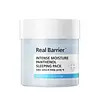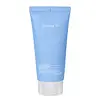What's inside
What's inside
 Key Ingredients
Key Ingredients

 Benefits
Benefits

 Concerns
Concerns

 Ingredients Side-by-side
Ingredients Side-by-side

Water
Skin ConditioningBetaine
HumectantPanthenol
Skin Conditioning1,2-Hexanediol
Skin ConditioningNiacinamide
SmoothingMethylpropanediol
SolventCaprylic/Capric Triglyceride
MaskingPolyglyceryl-10 Laurate
Skin ConditioningMorus Alba Leaf Extract
Skin ConditioningRosa Indica Flower Extract
AntioxidantCitrus Iyo Fruit Extract
EmollientHydrangea Serrata Leaf Extract
Skin ConditioningRosa Rugosa Fruit Extract
Skin ConditioningAloe Barbadensis Leaf Extract
EmollientCurcuma Longa Root Extract
MaskingCoral Extract
Skin ConditioningOcimum Sanctum Leaf Extract
Skin ConditioningFicus Carica Fruit Extract
HumectantCentella Asiatica Extract
CleansingLavandula Angustifolia Oil
MaskingCitrus Grandis Peel Oil
MaskingRosmarinus Officinalis Leaf Oil
MaskingHelianthus Annuus Seed Oil
EmollientChamomilla Recutita Oil
MaskingSimmondsia Chinensis Seed Oil
EmollientSodium Hyaluronate
HumectantRosa Damascena Flower Oil
MaskingHydrogenated Lecithin
EmulsifyingAmmonium Acryloyldimethyltaurate/Vp Copolymer
C13-15 Alkane
SolventXanthan Gum
EmulsifyingCarbomer
Emulsion StabilisingTromethamine
BufferingButylene Glycol
HumectantAdenosine
Skin ConditioningCyamopsis Tetragonoloba Gum
Emulsion StabilisingAgar
MaskingLactobacillus
Skin ConditioningGlycerin
HumectantTocopherol
AntioxidantGlycolipids
Skin ConditioningMyristoyl/Palmitoyl Oxostearamide/Arachamide Mea
Skin ConditioningEctoin
Skin ConditioningBeta-Sitosterol
Emulsion StabilisingLysolecithin
EmulsifyingFucosterol
AntioxidantLinoleic Acid
CleansingTrehalose
HumectantPhospholipids
Skin ConditioningCeramide NP
Skin ConditioningSodium Acetylated Hyaluronate
HumectantHydrolyzed Hyaluronic Acid
HumectantPhytosterols
Skin ConditioningEthylhexylglycerin
Skin ConditioningLimonene
PerfumingLinalool
PerfumingWater, Betaine, Panthenol, 1,2-Hexanediol, Niacinamide, Methylpropanediol, Caprylic/Capric Triglyceride, Polyglyceryl-10 Laurate, Morus Alba Leaf Extract, Rosa Indica Flower Extract, Citrus Iyo Fruit Extract, Hydrangea Serrata Leaf Extract, Rosa Rugosa Fruit Extract, Aloe Barbadensis Leaf Extract, Curcuma Longa Root Extract, Coral Extract, Ocimum Sanctum Leaf Extract, Ficus Carica Fruit Extract, Centella Asiatica Extract, Lavandula Angustifolia Oil, Citrus Grandis Peel Oil, Rosmarinus Officinalis Leaf Oil, Helianthus Annuus Seed Oil, Chamomilla Recutita Oil, Simmondsia Chinensis Seed Oil, Sodium Hyaluronate, Rosa Damascena Flower Oil, Hydrogenated Lecithin, Ammonium Acryloyldimethyltaurate/Vp Copolymer, C13-15 Alkane, Xanthan Gum, Carbomer, Tromethamine, Butylene Glycol, Adenosine, Cyamopsis Tetragonoloba Gum, Agar, Lactobacillus, Glycerin, Tocopherol, Glycolipids, Myristoyl/Palmitoyl Oxostearamide/Arachamide Mea, Ectoin, Beta-Sitosterol, Lysolecithin, Fucosterol, Linoleic Acid, Trehalose, Phospholipids, Ceramide NP, Sodium Acetylated Hyaluronate, Hydrolyzed Hyaluronic Acid, Phytosterols, Ethylhexylglycerin, Limonene, Linalool
Water
Skin ConditioningButylene Glycol
HumectantGlycerin
HumectantCyclohexasiloxane
EmollientCaprylyl Methicone
Skin ConditioningPolyglyceryl-3 Methylglucose Distearate
EmulsifyingHydroxyacetophenone
AntioxidantTrehalose
HumectantSodium Polyacryloyldimethyl Taurate
Emulsion StabilisingCarbomer
Emulsion StabilisingIsododecane
EmollientAmmonium Acryloyldimethyltaurate/Vp Copolymer
Dicaprylyl Ether
EmollientSodium Methyl Stearoyl Taurate
CleansingPanthenol
Skin ConditioningAstragalus Membranaceus Root Extract
EmollientTromethamine
BufferingSalix Alba Bark Extract
AstringentDipropylene Glycol
HumectantEthylhexylglycerin
Skin ConditioningPolyglyceryl-10 Dilaurate
Dimethicone/Vinyl Dimethicone Crosspolymer
Skin ConditioningDisodium EDTA
Dipotassium Glycyrrhizate
HumectantGluconolactone
Skin ConditioningMoringa Oleifera Seed Oil
Emollient1,2-Hexanediol
Skin ConditioningPolyglyceryl-10 Myristate
Skin ConditioningPentylene Glycol
Skin ConditioningCeramide NP
Skin ConditioningCaprylyl Glycol
EmollientPhytosphingosine
Skin ConditioningLonicera Japonica Flower Extract
Skin ConditioningSodium Hyaluronate
HumectantHydrogenated Lecithin
EmulsifyingCaprylic/Capric Triglyceride
MaskingCetyl Ethylhexanoate
EmollientEthylhexyl Palmitate
EmollientWater, Butylene Glycol, Glycerin, Cyclohexasiloxane, Caprylyl Methicone, Polyglyceryl-3 Methylglucose Distearate, Hydroxyacetophenone, Trehalose, Sodium Polyacryloyldimethyl Taurate, Carbomer, Isododecane, Ammonium Acryloyldimethyltaurate/Vp Copolymer, Dicaprylyl Ether, Sodium Methyl Stearoyl Taurate, Panthenol, Astragalus Membranaceus Root Extract, Tromethamine, Salix Alba Bark Extract, Dipropylene Glycol, Ethylhexylglycerin, Polyglyceryl-10 Dilaurate, Dimethicone/Vinyl Dimethicone Crosspolymer, Disodium EDTA, Dipotassium Glycyrrhizate, Gluconolactone, Moringa Oleifera Seed Oil, 1,2-Hexanediol, Polyglyceryl-10 Myristate, Pentylene Glycol, Ceramide NP, Caprylyl Glycol, Phytosphingosine, Lonicera Japonica Flower Extract, Sodium Hyaluronate, Hydrogenated Lecithin, Caprylic/Capric Triglyceride, Cetyl Ethylhexanoate, Ethylhexyl Palmitate
 Reviews
Reviews

Ingredients Explained
These ingredients are found in both products.
Ingredients higher up in an ingredient list are typically present in a larger amount.
1,2-Hexanediol is a synthetic liquid and another multi-functional powerhouse.
It is a:
- Humectant, drawing moisture into the skin
- Emollient, helping to soften skin
- Solvent, dispersing and stabilizing formulas
- Preservative booster, enhancing the antimicrobial activity of other preservatives
Ammonium Acryloyldimethyltaurate/Vp Copolymer (let's call it AAVC for short) is a synthetically created polymer. It's used as a film-forming agent and used to thicken the consistency of products.
AAVC is able to increase the consistency and viscosity of products due to its large molecule size. It also prevents ingredients from separating.
Butylene Glycol (or BG) is used within cosmetic products for a few different reasons:
Overall, Butylene Glycol is a safe and well-rounded ingredient that works well with other ingredients.
Though this ingredient works well with most skin types, some people with sensitive skin may experience a reaction such as allergic rashes, closed comedones, or itchiness.
Learn more about Butylene GlycolThis ingredient is an emollient, solvent, and texture enhancer. It is considered a skin-softener by helping the skin prevent moisture loss.
It helps thicken a product's formula and makes it easier to spread by dissolving clumping compounds.
Caprylic Triglyceride is made by combining glycerin with coconut oil, forming a clear liquid.
While there is an assumption Caprylic Triglyceride can clog pores due to it being derived from coconut oil, there is no research supporting this.
Learn more about Caprylic/Capric TriglycerideCarbomer is a polymer of acrylic acid. Its main role is to create a gel consistency.
A high amount of carbomer can cause pilling or balling up of products. Don't worry, most products contain 1% or less of carbomer.
Ceramide NP is a type of ceramide and formally known as ceramide 3.
Ceramides are intercellular lipids naturally found in our skin that bonds dead skin cells together to create a barrier. They are known for their ability to hold water and thus are a great ingredient for dry skin.
Ceramides are an important building block for our skin barrier. A stronger barrier helps the skin look more firm and hydrated. By bolstering the skin ceramides act as a barrier against irritating ingredients. This can help with inflammation as well.
If you would like to eat ceramides, sweet potatoes contain a small amount.
Read more about other common types of ceramides here:
Ceramide AP
Ceramide EOP
Ethylhexylglycerin (we can't pronounce this either) is commonly used as a preservative and skin softener. It is derived from glyceryl.
You might see Ethylhexylglycerin often paired with other preservatives such as phenoxyethanol. Ethylhexylglycerin has been found to increase the effectiveness of these other preservatives.
Glycerin is already naturally found in your skin. It helps moisturize and protect your skin.
A study from 2016 found glycerin to be more effective as a humectant than AHAs and hyaluronic acid.
As a humectant, it helps the skin stay hydrated by pulling moisture to your skin. The low molecular weight of glycerin allows it to pull moisture into the deeper layers of your skin.
Hydrated skin improves your skin barrier; Your skin barrier helps protect against irritants and bacteria.
Glycerin has also been found to have antimicrobial and antiviral properties. Due to these properties, glycerin is often used in wound and burn treatments.
In cosmetics, glycerin is usually derived from plants such as soybean or palm. However, it can also be sourced from animals, such as tallow or animal fat.
This ingredient is organic, colorless, odorless, and non-toxic.
Glycerin is the name for this ingredient in American English. British English uses Glycerol/Glycerine.
Learn more about GlycerinHydrogenated Lecithin is created from the hydrogenation of lecithin (a group of phospholipids). Hydrogenation is a chemical reaction between hydrogen and another element.
This ingredient is an emollient and emulsifier. As an emollient, it helps soften skin by trapping moisture within. As an emulsifier, it prevents oil and water ingredients from separating.
Panthenol is a common ingredient that helps hydrate and soothe the skin. It is found naturally in our skin and hair.
There are two forms of panthenol: D and L.
D-panthenol is also known as dexpanthenol. Most cosmetics use dexpanthenol or a mixture of D and L-panthenol.
Panthenol is famous due to its ability to go deeper into the skin's layers. Using this ingredient has numerous pros (and no cons):
Like hyaluronic acid, panthenol is a humectant. Humectants are able to bind and hold large amounts of water to keep skin hydrated.
This ingredient works well for wound healing. It works by increasing tissue in the wound and helps close open wounds.
Once oxidized, panthenol converts to pantothenic acid. Panthothenic acid is found in all living cells.
This ingredient is also referred to as pro-vitamin B5.
Learn more about PanthenolSodium Hyaluronate is hyaluronic acid's salt form. It is commonly derived from the sodium salt of hyaluronic acid.
Like hyaluronic acid, it is great at holding water and acts as a humectant. This makes it a great skin hydrating ingredient.
Sodium Hyaluronate is naturally occurring in our bodies and is mostly found in eye fluid and joints.
These are some other common types of Hyaluronic Acid:
Learn more about Sodium HyaluronateTrehalose is a disaccharide made of two glucose molecules (glucose is sugar!). Trehalose is used to help moisturize skin. It also has antioxidant properties.
As a humectant, trehalose helps draw moisture from the air to your skin. This helps keep your skin hydrated.
Due to its antioxidant properties, trehalose may help with signs of aging. Antioxidants help fight free-radical molecules, unstable molecules that may damage your skin.
In medicine, trehalose and hyaluronic acid are used to help treat dry eyes.
Some animals, plants, and bacteria create trehalose as a source of energy to survive freeze or lack of water.
Learn more about TrehaloseTromethamine helps balance the pH and improve the texture of a product. It is synthetically created.
As an emulsifier, Tromethamine prevents oil and water ingredients from separating. This helps stabilize the product and elongate a product's shelf life. Tromethamine also makes a product thicker.
Tromethamine helps balance the pH level of a product. Normal pH level of skin is slightly acidic (~4.75-5.5). The acidity of our skin is maintained by our glands and skin biome. Being slightly acidic allows our skin to create an "acid mantle". This acid mantle is a thin barrier that protects our skin from bacteria and contaminants.
Oral Tromethanmine is an anti-inflammatory drug but plays the role of masking, adding fragrance, and/or balancing pH in skincare.
1,3-Propanediol, 2-amino-2-(hydroxymethyl)-
Learn more about TromethamineWater. It's the most common cosmetic ingredient of all. You'll usually see it at the top of ingredient lists, meaning that it makes up the largest part of the product.
So why is it so popular? Water most often acts as a solvent - this means that it helps dissolve other ingredients into the formulation.
You'll also recognize water as that liquid we all need to stay alive. If you see this, drink a glass of water. Stay hydrated!
Learn more about Water